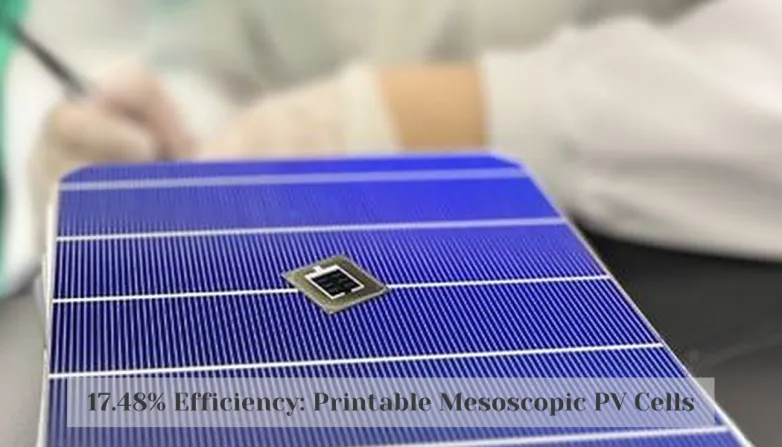17.48% Efficiency: Printable Mesoscopic PV Cells
- Researchers from East China University of Science and Technology have developed a new manufacturing process for printable mesoscopic carbon perovskite solar cells (p-MPSCs): replacing metals & vapor deposition with carbon & screen printing for cost-effective production & high efficiency.

Researchers from East China University of Science and Technology have developed a new manufacturing process for printable mesoscopic carbon perovskite solar cells (p-MPSCs). The process replaces expensive metals with carbon materials as counter electrodes and employs screen printing techniques instead of vapor deposition, making the production cost relatively lower. The scientists used two thiophene-based molecules known as thiophene [3,2-b] thiophene (TT) and 2,5-dibromothiophene [3,2-b] thiophene (TT-2Br) as passivation agents for the grain boundaries in p-MPSCs. This configuration allowed for a cross-interface bidentate passivation molecule that modulated the strain of the crystal lattice of perovskite films. By utilizing an artificial reflector device, the team was able to achieve a power conversion efficiency of 17.48%, an open-circuit voltage of 1.01 V, a short-circuit density of 22.92 mA cm-2, and a fill factor of 75.33%. The bifacial power output was also significantly improved to 20.44 mW cm-2 and the open-circuit voltage to 2.03 V in series-connected devices. In parallel-connected devices, the BPO increased to 25.84 mW cm-2 and the short-circuit current reached 39.96 mA cm-2. This new approach could potentially lead to high-efficiency passivation and efficient assembly of photovoltaic devices in p-MPSCs, offering possibilities for practical applications.
What Are the Benefits of New p-MPSCs Manufacturing Process?
Benefits of New p-MPSCs Manufacturing Process:
- Expensive metals replaced with carbon materials as counter electrodes.
- Process employs screen printing techniques instead of vapor deposition.
- Production cost relatively lower.
- Power conversion efficiency of 17.48%.
- Open-circuit voltage of 1.01 V.
- Short-circuit density of 22.92 mA cm-2.
- Fill factor of 75.33%.
- Bifacial power output significantly improved to 20.44 mW cm-2.
- Open-circuit voltage to 2.03 V reached in series-connected devices.
- BPO of 25.84 mW cm-2 and short-circuit current of 39.96 mA cm-2 reached in parallel-connected devices.
- Potential for high-efficiency passivation and efficient assembly of photovoltaic devices.
- Possibilities for practical applications.
Also read
- CNNP Optoelectronics brings utility-scale perovskite modules out of the lab
- Low-Temperature Sequential Deposition Lifts Inverted Perovskite Solar Cells Efficiency Record
- Self-Assembling Molecule Breakthrough Brings Commercial Perovskite Solar Closer to Market
- Camphor Additives Boost Perovskite Solar Cell Efficiency
- NUS Sets Record With 26.4% Perovskite-Organic Solar Cell
